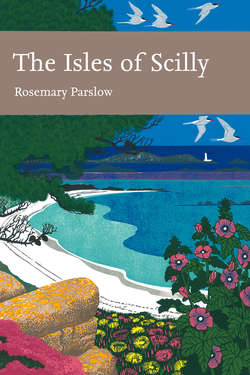Читать книгу The Isles of Scilly - Rosemary Parslow - Страница 27
EARLY MAMMALS AND OTHER FAUNA
ОглавлениеVery few remains of the early fauna of the islands have been found, but one small rodent, the root or Pallas’s vole Microtus oeconomus (very similar to our field vole M. agrestis) was present, as was the red deer Cervus elaphus, and both were still present in Scilly in the Bronze Age.
Modern Scilly is poor in mammal species, and the written records are sparse. Bones found in the Iron Age sections of the excavations on Nornour included Scilly shrew, wood mouse or long-tailed field mouse Apodemus sylvaticus and root vole. The first two are still extant in Scilly, but the root vole is believed to have become extinct at some later period, no remains having been found after Romano-British times (Turk, 1984; Ratcliffe & Straker, 1996). Root voles are no longer found in Britain although there are isolated (relict) populations still in the Netherlands, Scandinavia and eastern Europe (Mitchell-Jones et al., 1999). In late summer 1978 my daughter and I found a vole mandible and two molars in storm debris on the boulder beach below the Porth Killier Bronze Age midden, along with scraps of bone and shards of coarse pottery. These were sent to the Natural History Museum, where the vole remains were identified as root vole (Gordon Corbet, in litt.). Later, in 1982, I had the opportunity to go to Hungary and was able to visit root vole habitat near Lake Kolon, in Kiskunsági National Park. This is an area of rough grassland and Phragmites swamp, which would seem to be typical habitat of the vole. An interesting note by Mitchell-Jones et al. (1999) is that root voles migrate from wetland to dunes or drier habitats in winter, and even into houses.
Other animal remains that have been found from archaeological sites include seals, various cetaceans, red deer, toad Bufo bufo (an amphibian no longer native in Scilly), as well as numerous fish and bird species and domestic horse, ox and sheep, all from Bronze Age sites. Roe deer Capreolus capreolus, seals, cetaceans and domestic animals have been recorded from Iron Age/Romano-British sites. At coastal sites seals, small cetaceans and fish were clearly an important part of the diet of the human inhabitants. Although not listed among the remains of fish and molluscs that have been recorded, the boulder beaches and rock pools can support several species of easily caught edible fish, for example rocklings, the larger gobies and grey mullet Chelon sp. Today the large freshwater pools on the islands also contain very large eels Anguilla anguilla, and these may also have been present in the past.
Further discussion on the early mammal fauna is included in Chapter 15, and prehistoric and historical records of birds are discussed in Chapter 16.
